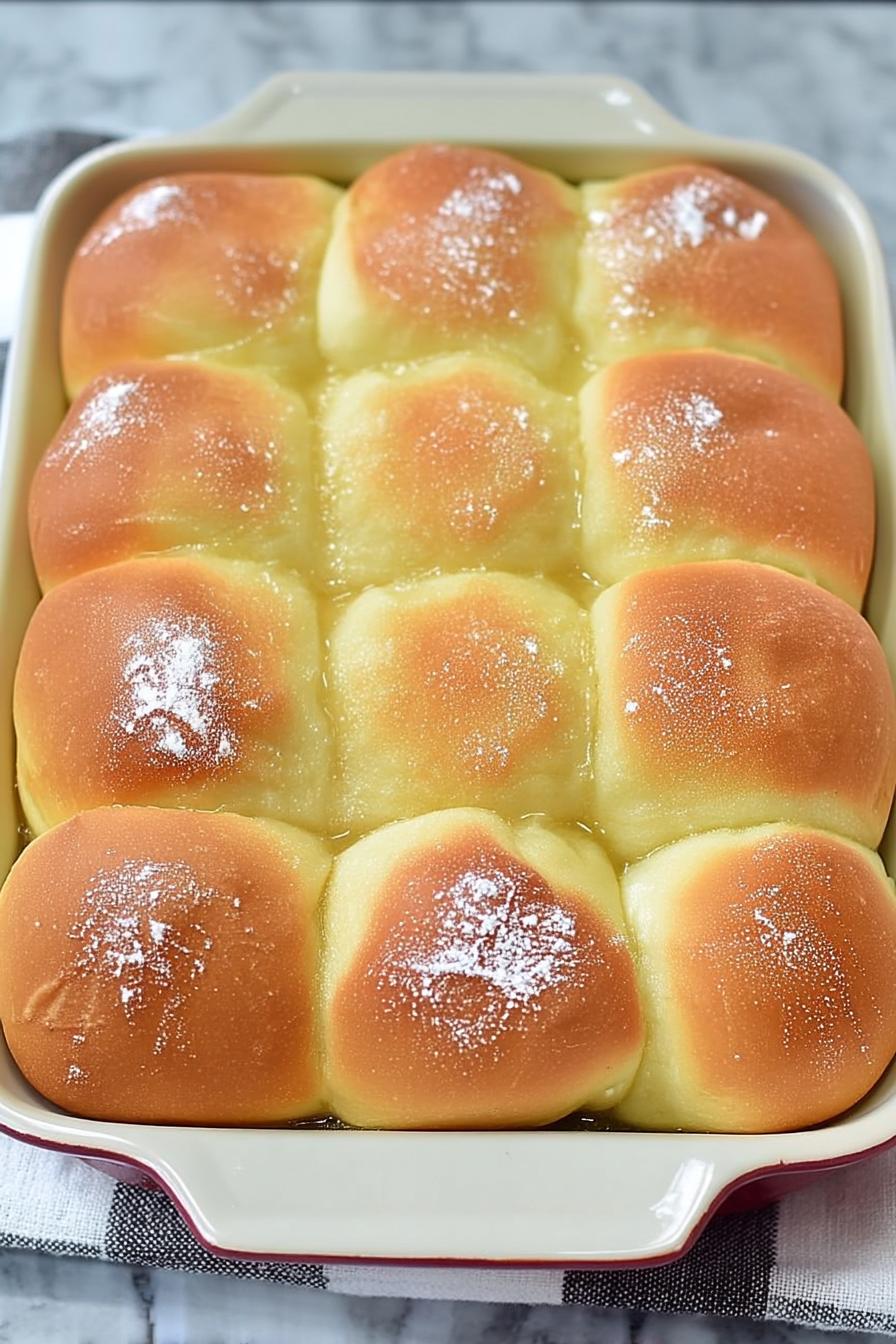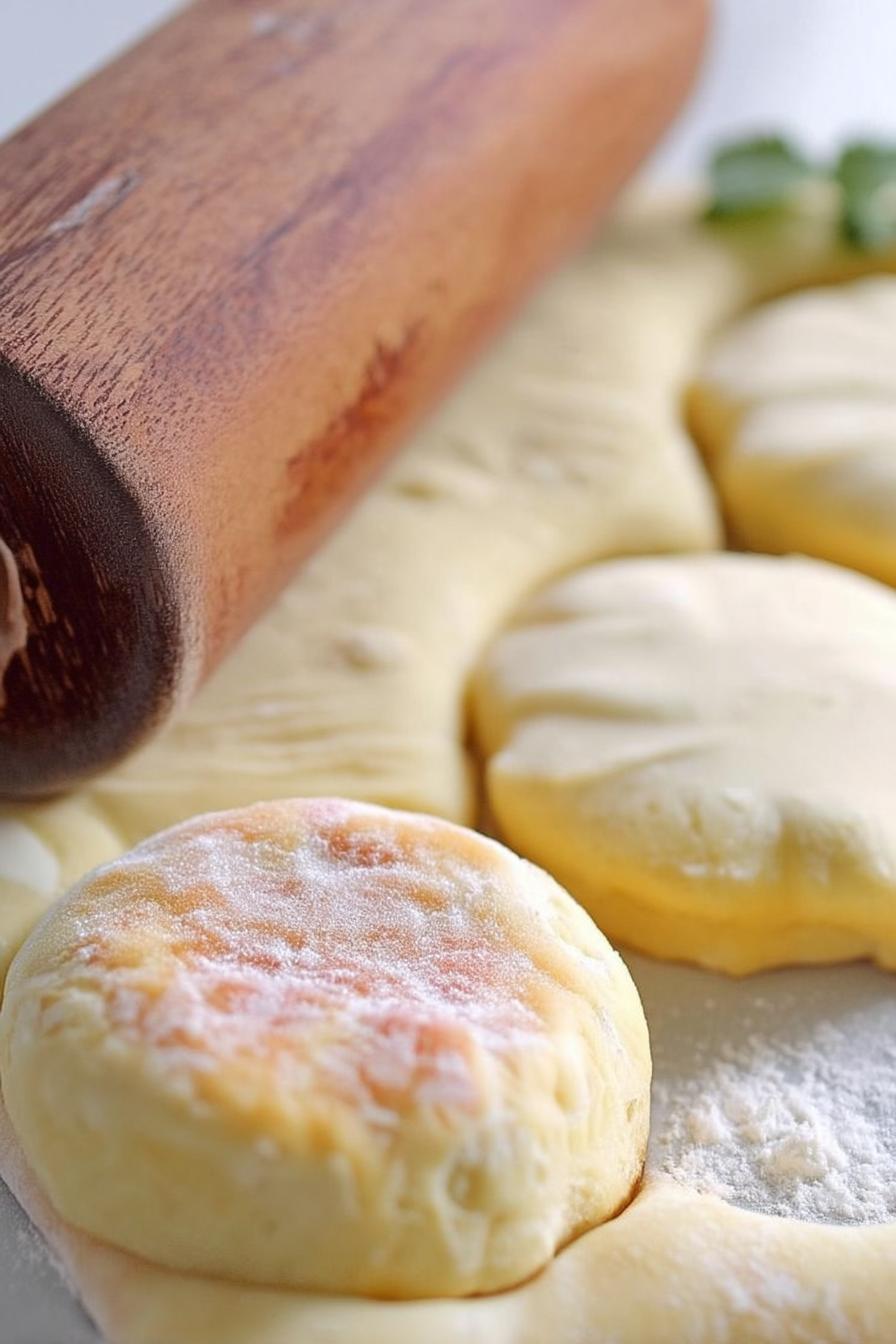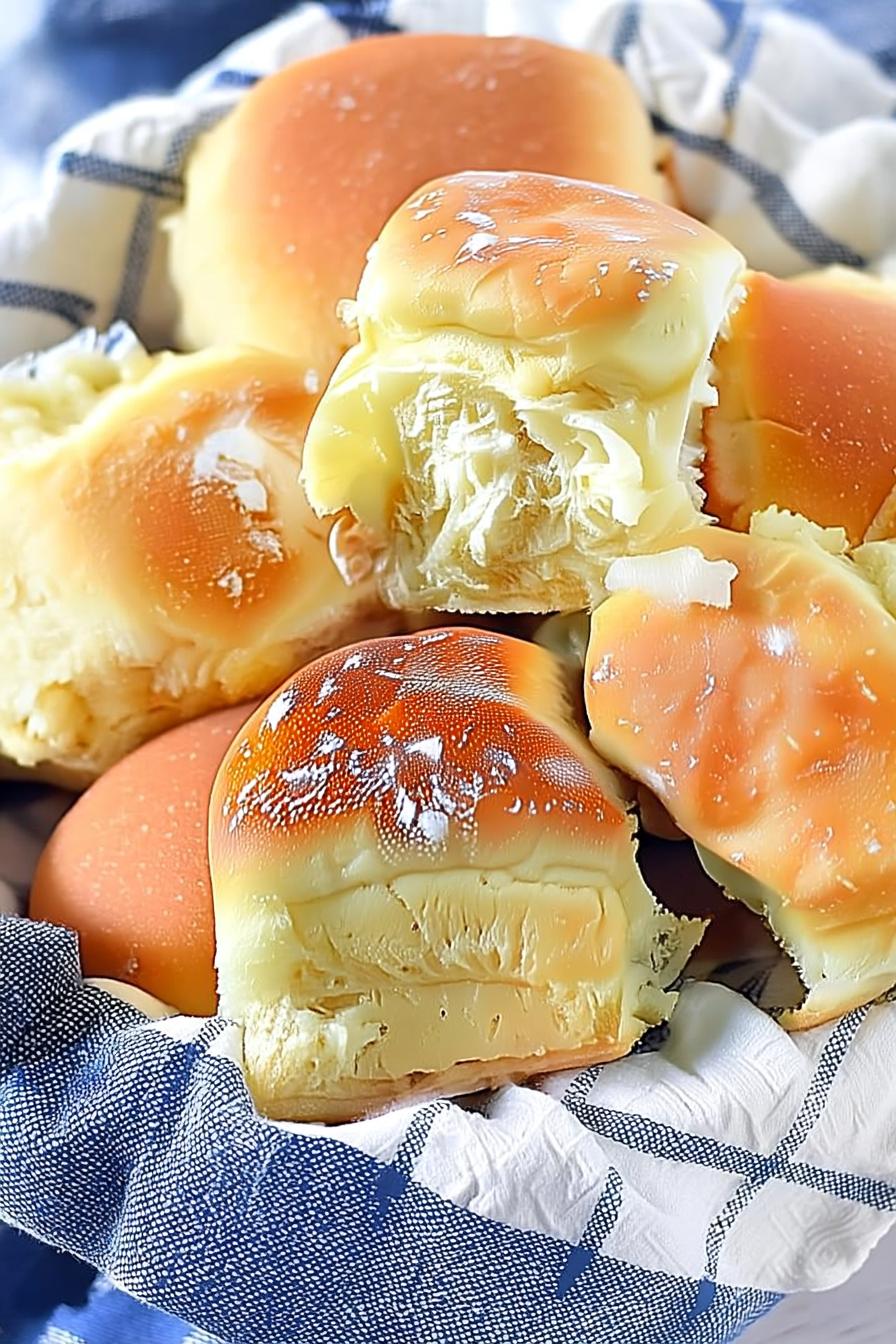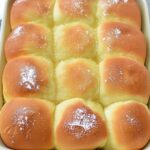There’s nothing quite like the warm, fragrant steam of Homemade Dinner Rolls straight from the oven, their golden edges glowing under your kitchen light. After several trial runs—tweaking proofing times and kneading techniques—I finally honed a recipe that yields rolls with a silky interior and a crisp, buttery crust. In every bite, you’ll catch hints of rich, nutty yeast aroma and a tender crumb that snaps with a soft crackle as it cools.
Why You’ll Love Homemade Dinner Rolls
- Butter-brushed tops that glisten and stay tender
- Soft crumb with a slight chew, perfect for sopping up gravy
- Basic pantry ingredients you likely have on hand
- Rooted in Grandma’s traditions—these rolls carry a bit of heritage in every bite

A Little Background
I first tested this dough on a chilly November afternoon, chasing that cozy holiday feeling. With each batch, I adjusted the sugar-to-butter ratio and recorded how the dough responded to different room temperatures. One blustery evening, I let the shaped rolls rise under a slightly damp towel, and the result was the fluffiest batch yet—proof that small tweaks can make a big difference.
Personal Testing Note (Prep): I found that proofing the yeast for a full 8 minutes, rather than 5, gave the liveliest foam and a tang of yeastiness that balances the roll’s sweetness.
Key Ingredients for Homemade Dinner Rolls
- Whole Milk (1 cup): warmed to 110°F to awaken the yeast; swap for buttermilk for a tangy note
- Active Dry Yeast (2¼ tsp): the engine of rise; ensure freshness for best puff
- Granulated Sugar (¼ cup): feeds the yeast and softens crumb; honey works in a pinch
- Unsalted Butter (⅓ cup), melted: adds richness and keeps edges tender; use European-style for extra depth
- All-Purpose Flour (4 cups): forms structure; spoon and level each cup to avoid dense dough
- Large Egg (1): binds and enriches; room temperature for easier incorporation
How to Make Homemade Dinner Rolls
- Combine 1 cup warm milk (110°F) and 2¼ tsp yeast in a large bowl. Stir gently and let sit 5–10 minutes until frothy, filling the air with a faint, nutty scent.
- Whisk in ¼ cup sugar, ⅓ cup melted butter, 1 tsp salt, and 1 beaten egg until the mixture is glossy and smooth.
- Add 4 cups flour, one cup at a time, stirring until a soft dough forms. Turn onto a lightly floured surface and knead about 5 minutes until supple and elastic.
- Place dough in an oiled bowl, cover, and let rise 1 hour until doubled. Punch down, shape into 16 rolls, arrange in a greased 9×13 pan, then cover and proof 30–45 minutes. Bake at 375°F for 15–18 minutes until golden.

Pro Tips & Troubleshooting
- Personal Testing Note (Cooking): I learned that extending the bake to a full 18 minutes locks in moisture; 15 minutes left the center ever so slightly gummy.
- If dough sticks: sprinkle a bit more flour—avoid dumping all at once or rolls can turn dense.
- Try brushing tops with garlic-herb butter before baking for a savory spin.
- Doubling the batch? Give the mixer an extra minute of kneading to handle the heftier load.
Storage & Make-Ahead Guide
Store rolls in an airtight container at room temperature for up to 2 days, or refrigerate for 4 days. To freeze, wrap cooled rolls in foil and stash in a freezer bag for up to 3 months. Reheat at 350°F for about 5 minutes until warm. Always cool completely before sealing to prevent soggy tops. Personal Testing Note (Storage): After refrigeration, a quick 3-minute toast brought back fresh-baked crunch without drying out the crumb.
Serving Suggestions
Slit rolls and slide in sliced turkey or ham for mini sandwiches. Serve alongside a hearty stew or slather with strawberry jam for breakfast warmth. Stack them on a platter under a clean towel to keep them light and inviting.

Frequently Asked Questions
- How do I store homemade dinner rolls? Store in an airtight container at room temperature up to 2 days, refrigerate up to 4 days, or freeze up to 3 months.
- How long do dinner rolls last on the counter? They stay soft for about 48 hours when sealed tightly.
- Why are my dinner rolls dense? Likely under-kneading or too much flour; aim for a smooth, elastic dough.
- Can I freeze unbaked dinner rolls? Yes—freeze after shaping, then thaw and proof before baking.
- How do you reheat homemade dinner rolls? Warm at 350°F for 5 minutes wrapped in foil to retain moisture.
- What temperature is best for proofing dough? A warm spot around 75–80°F encourages steady rise without fermentation off-flavors.
Final Thoughts
These Homemade Dinner Rolls carry the aroma of every test batch and the comfort of shared meals. My favorite way? Split one, smear with honey-butter, and savor the soft pull-apart layers. I can’t wait to hear how your rolls turn out—be sure to share your photos and tweaks!
More Recipes You’ll Love

Homemade Dinner Rolls
Fluffy, buttery rolls with a golden crust, perfect for family dinners and holiday gatherings.
Servings 16 servings
Calories 150kcal
Dough
- 1 cup whole milk warmed to 110°F
- 2.25 teaspoon active dry yeast
- 0.25 cup granulated sugar
- 0.33 cup unsalted butter melted
- 1 large egg
- 1 teaspoon salt
- 4 cup all-purpose flour
Brushing
- 2 tablespoon unsalted butter melted, for brushing
Dough Preparation
-
Combine warm milk and yeast in a large bowl. Let sit 5–10 minutes until frothy.
1 cup whole milk, 2.25 teaspoon active dry yeast
-
Whisk in sugar, melted butter, beaten egg, and salt until glossy. Gradually add flour and stir to form a soft dough.
0.25 cup granulated sugar, 0.33 cup unsalted butter, 1 large egg, 1 teaspoon salt, 4 cup all-purpose flour
-
Turn dough onto a lightly floured surface and knead 5 minutes until smooth and elastic.
Shape and Proof
-
Divide dough into 16 pieces, shape into rolls, place in a greased 9×13 pan, cover, and proof 30–45 minutes.
Personal Testing Note (Cooking): Baking the rolls for the full 18 minutes locked in moisture and ensured a crisp crust.
Personal Testing Note (Storage): After refrigeration, a quick 3-minute toast at 350°F restored the fresh-baked texture.





